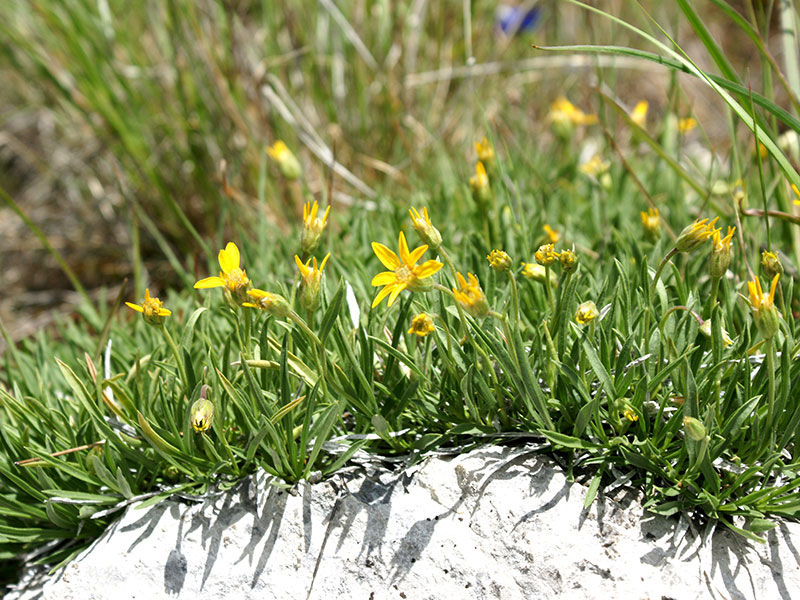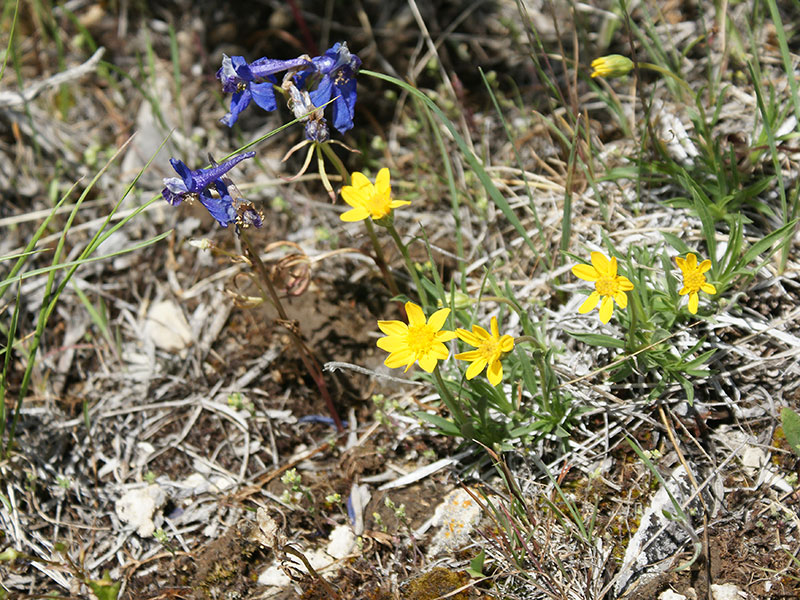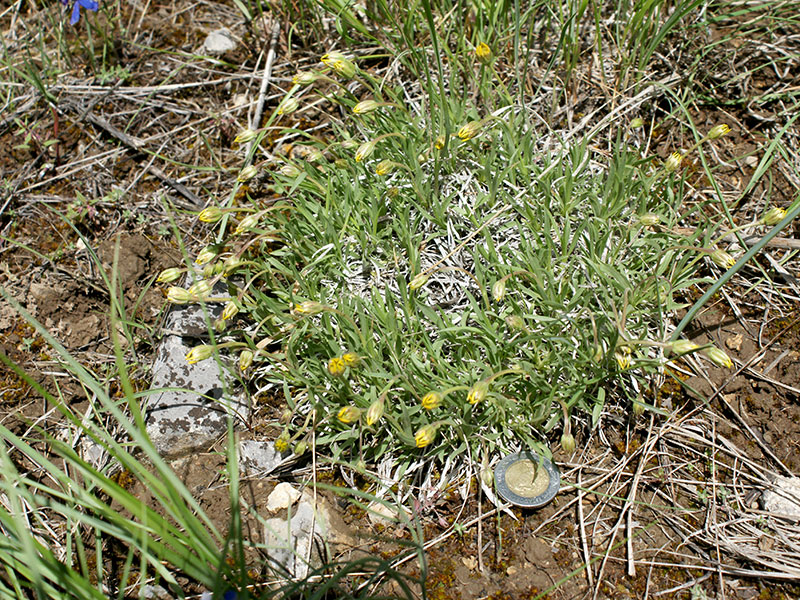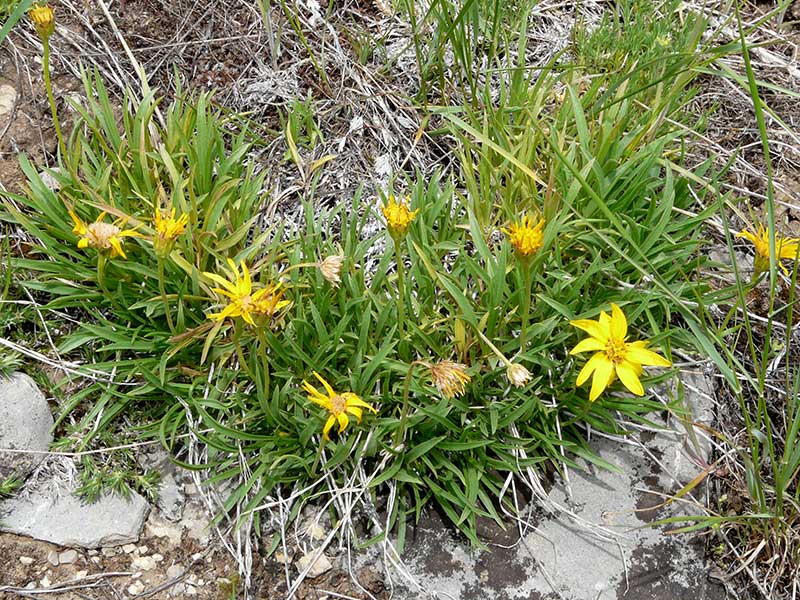Stenotus acaulis / stemless goldenweed
- very short, mat forming perennial yellow “daisy”
- thin, lance-shaped leaves, pointing upward
- yellow flower head with 6-15 ray florets, up to 50 disk florets
- in dry, rocky, open-scrub habitats
Also known as: stemless mock goldenweed, short-stemmed goldenweed
Synonym: Haplopappus acaulis
To start, I find the common name, as listed on many sites to be stemless MOCK goldenweed, to be weird, because the “mock” bit suggests there is something mocked, and I can’t find it. As for the Latin synonym, it’s just fun to say.
Beyond that, stemless goldenweed is a perennial herb found on rocky soils, around sagebrush or in other dry, rocky, open scrub areas. It usually forms very low (2-5 inches tall), compact tufts or mats. these grow from short, woody stems.
Not uncommonly, there is a dead spot in the middle of the mat for which I am not sure there is a good physiological explanation, but clearly the mat has expanded outward and the oldest bits are in the middle. The newer, outer areas have their own descending roots making them easy to transplant.
The leaves of the stemless goldenweed are basically long and thin – linear or lance-shaped leaves; they point upward. They may get up to 4 inches long, but usually less. They are crowded at the tips of the branches and persist for 2-3 years. Sometimes, they are sticky. Sometimes, hairy. Sometimes not.
The inflorescence is a solitary flower head or small cluster of a few heads (up to 4). The flower head contains yellow disc florets and 6-15 yellow ray florets each about 1/2 inch long, and sits in a cup, about 1/3 inch across, formed by 2-3 rows of bracts. Otherwise, it basically looks like a very small yellow daisy.
Stemless goldenweed starts to flower in May and can continue all summer. Its size and location on rocky soils makes it stand out from other DYCs (darned yellow composites).
| Color | |
|---|---|
| Family | |
| Blossom size | |
| Inflorescence size | |
| Inflorescence type | |
| When? | |
| Where? |





